#gorobei
Text
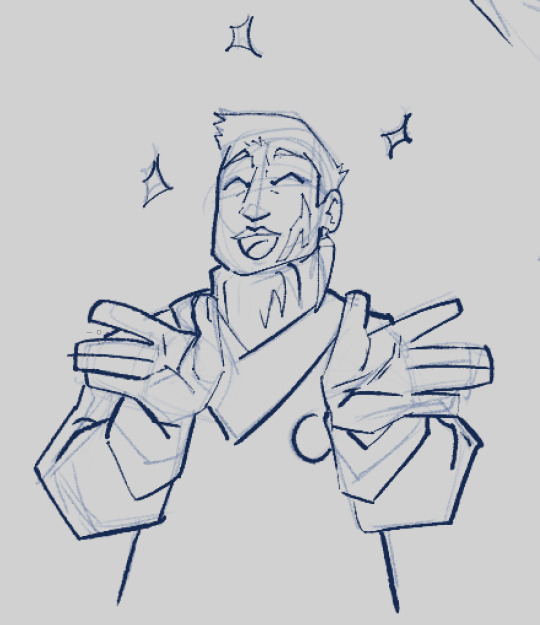
:D !
14 notes
·
View notes
Text
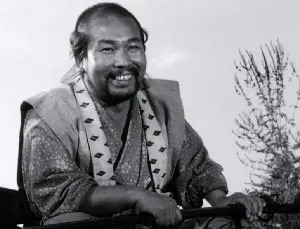
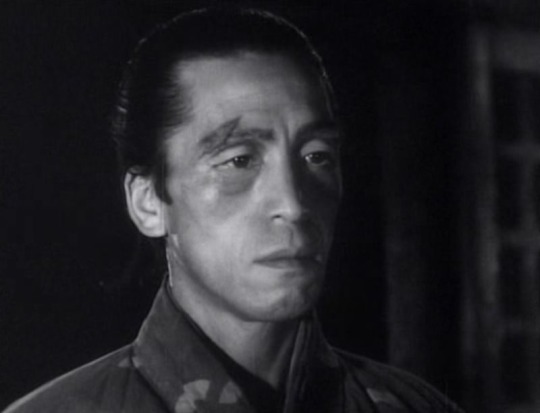
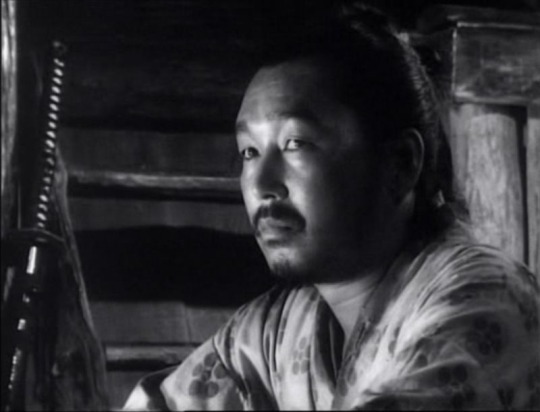

#seven samurai#gorobei katayama#kyuzo#heihachi hayashida#kikuchiyo#if you’ve never seen seven samurai vote for kikuchiyo because he’s my babygirl#this I ask of you my soldiers 🫡#polls
1 note
·
View note
Text

The Actor Ichikawa Danjuro V as Kazusa no Gorobei Tadamitsu in the Play Kitekaeru Nishiki no Wakayaka, by Katsukawa Shunsho, ca. 1780 Japan
179 notes
·
View notes
Note
So your crustaceans are named after chefs. What are some other noteworthy names for the aquarium residents?
Well, we also have:
Our Pyukumuku which are all named after different kinds of beans- Pinto, Java, Lima, Kidney, Navy, Black, and Lentil
Mama Feraligatr's name is Pancake. You'll never guess why (its because she's flat)
Her hatchlings are named Maple, Butter, Sugar, Choco, and Nanab. They're the Breakfast Bunch :)
Papa Feraligatr's name is Offler. He's an old man
One of the hatchling specialists is a big film nerd and our Samurott had seven eggs, so the Oshawott pups are named Kanbei, Gorobei, Shichiroji, Kyuzo, Hayashida, Katsushiro, and Kikuchikyo. Apparently the guys from the movie they're named after is a classic?? idk i havent seen it
There was a LOT of debate when we almost named the Cloyster 'Yonic'. We were so close
One of our Quagsires is named Bub. idk why that gets me so good sometimes I'll just be minding my business and I'll remember Bub and his little :] face and I'll just laugh REALLY hard. It's SUCH a good name for a Quagsire
#irl pokemon#pokemon#pokemon irl#water pokemon#water type#pyukumuku#feraligatr#totodile#oshawott#quagsire#cloyster#asks#((ooc: I've seen Seven Samurai. it slaps. you should watch it too))
42 notes
·
View notes
Text
Seven Samurai by Akira Kurosawa (1954) JPT3391 Neil McInnis
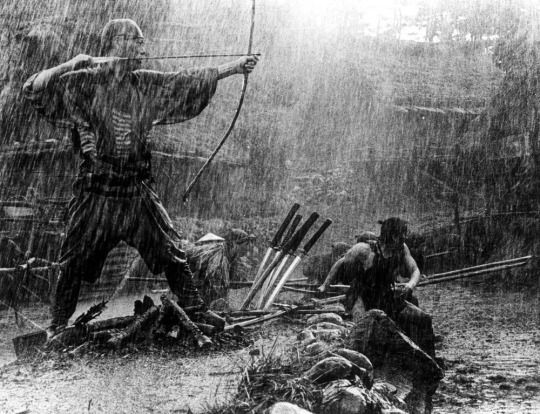
Set in the late Azuchi-Momoyama period, 7 Samurai details a story of survival, community, camaraderie, and loss. After a series of devastating raids from a marauding band of thieves, a small village turns to a traveling samurai, Kambei, for aid. Understandably, the Samurai is reluctant and skeptical at first, since he has everything to lose and nothing to gain. Fortunately for the villagers, he comes around to their side after rescuing one of their children from a stray bandit. Now determined to protect who he sees as innocent rural folk, he sets out to the city to recruit more Samurai for the effort. However, the village has been left practically destitute, and can only offer small servings of rice to any Samurai who offers them aid. The village elder suggests they find "a hungry Samurai".
In the town, after a series of surprise-attack tests on Samurai, they recruit Kambei's old war-buddy Shichirōji, along with Gorobei (a proficient archer), Heihachi, and Kyūzō, a stoic master swordsman whom Katsushirō develops a man-crush on. Kikuchiyo, a wild-eyed, monkey-like Samurai wannabe, is eventually accepted into the group after they give up trying to get him to go away. Once all 7 are recruited, they return to the village and begin the long process of building trust between themselves and the villagers. This trust also involves training them to use spears and basic tactics. They construct various defense structures, like wooden palisades, moats, and moving villagers to the center of the village.
Kambei decides to strike at the bandits preemptively, with a strike party consisting of Heihachi, Kikuchiyo, and Rikichi. They burn the bandit hut and force them out, freeing the captured women and cutting down the men. Rikichi's wife was made a concubine, so he and Heihachi rushed inside to rescue her. Tragically, Heihachi is shot at a distance by a musket. He's killed almost immediately and Kikuchiyo carries his body back to the village. Racked with grief, Kikuchiyo plants the flag they made atop a house overlooking Heihachi's grave, and vows to fight to the end.
The day of the raid approaches, the 6 remaining Samurai continue to fortify the village and train the villagers with bamboo spears. Kyuzo successfully dispatches 2 bandits and takes 1 musket in a solo night raid. Kambei orders the villagers to let the bandits in singularly or in small groups to slowly dispatch all of them. In the next raid, Gorobei is killed by a mounted archer. This goes on for several days, and Kikuchiyo steals one more musket. In the next raid, the presumed leader of the bandits takes several villagers hostage with a musket, and starts shooting at the Samurai as they try to break in. He hits Kyuzo, killing him nearly instantly. Enraged, Kikuchiyo charges the bandit, and sustains a serious wound, but still manages to drive his katana through the bandit's chest before he succumbs to his injury.
All in all, 4 of the 7 Samurai were killed, 3 of the 4 by gunshot. Kambei reflects on the incident, saying "in the end this was our loss. Those peasants bear the true victory" as he, Katsuhiro, and Shichiroji gaze solemnly at the graves of their fallen comrades.
The shot I chose to analyze for this film was the one where Kikichiyo stabs 5 more katana into a mound of mud, so that he can pick them up easily. This scene reflects the anger and guilt he feels from his fallen friends, and his resolve to keep on fighting on behalf of them and the villagers.
3 notes
·
View notes
Text
Star Wars Alien Species - Frenk
Gorobei was a planet in the galaxy's Inner Rim that was the homeworld of the Frenk species. The species had an armed force called the Frenk military, of which Rumi Paramita may have been a former member.
During the Clone Wars, some Frenks found work as bounty hunters, the most notable being Twazzi, who was present in the "Box" and was a notable acrobat. Rumi Paramita was a member of a cadre of bounty hunters who were hired to protect a village of Felucian nysillin farmers from a group of pirates, though she perished while defending the village.
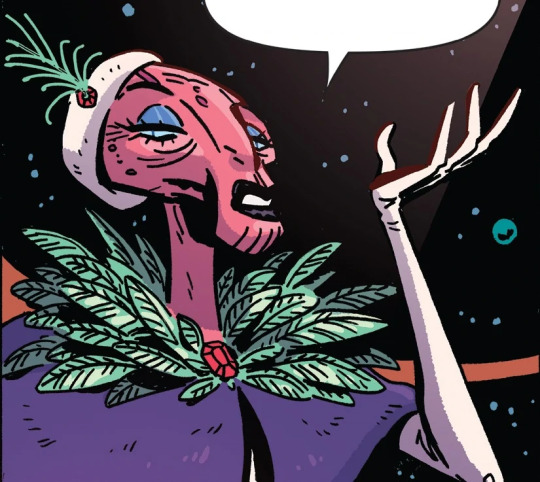
Risha Synata was a female Frenk who as a famous actress during the Clone Wars. Synata was later caught working for Count Dooku by Anakin Skywalker and Padmé Amidala. She was then later sent to prison on Coruscant.
Lis Mohles was a female Frenk assassin who was wanted by the Galactic Republic during the Clone Wars. On Clabron, she tried to assassinate senator Padmé Amidala but was later incapacitated by Amidala.
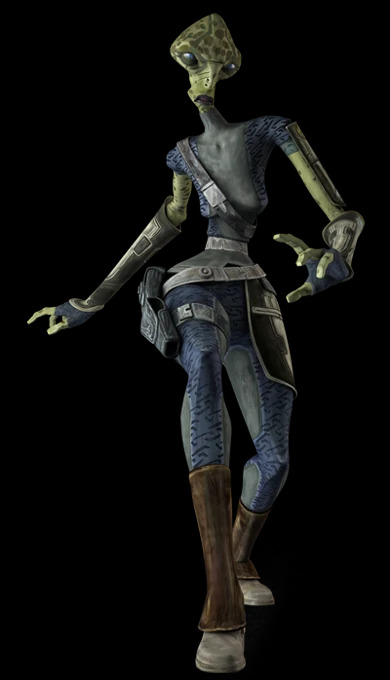
The Frenk were a tall species, with most members reaching heights above 2 meters or 6.6 feet. They had red or green skin and four nostrils set upon a narrow snout and had four fingers on each hand, with the one next to the thumb being the larger. All known members of this species were very agile and fast.
Examples of Names: Lis Mohles, Risha Synata, Rumi Paramita, Twazzi.
Language: Frenk can speak Galactic Basic Standard.
9 notes
·
View notes
Text
Seven Samurai by Akira Kurosawa
Among the films directed by Akira Kurosawa that I have seen so far, my favorite is this movie. This film is about seven samurai who fought for the farmers with their kind hearts and the poor farmers.
I was prepared for the deaths of the main characters because it is a samurai film and several lines reminded me that someone was going to die, but I was fascinated by the charming portrayal of each individual and it was hard to watch the death of the four samurai. All seven samurai in the film possess compelling qualities, such as Kambei, who exudes charisma and leadership, and Kyuzo, silent yet gentle and skillful in swordsmanship. One of them, Kikuchiyo, being of peasant origin, aspires to become a "true samurai." Consequently, he aligns himself with Kambei, who closely embodies his ideal image. In a parallel to Kyuzo's feat of single-handedly snatching the matchlock gun known as Tanegashima from the enemy, Kikuchiyo strays from his assigned post to seize a gun alone. However, this action starkly contradicts the essence of the "true samurai" he aims to be, leading to significant harm to his comrades during a counterattack by enemies, resulting in the loss of the vice-commander Gorobei. Reflecting on his actions, Kikuchiyo, despite being shot, fervently kills the last opponent and dies. His role in connecting the samurai and peasants and injecting humor into the narrative made his death profoundly sorrowful. Is it a coincidence that the two men who took the matchlock are killed by the matchlock? Is it a coincidence that Heihachi, who had hurt Rikichi, albeit unwillingly, was shot in defense of him? It seemed to me that everyone acted and died as if they were responsible for their own actions.
The vividness of the concept of living was effectively portrayed in the film. The sexuality of the youth, individuals choosing to drink alcohol over sleeping when faced with the reality that they might die, and acts of peasants disarming samurai to protect themselves all contributed to a tangible sense of the essence of life. While the peasants are subjects under the control of the samurai, they, though weak, accumulate wisdom for survival and tenaciously navigate the challenges of their era. While their actions may appear cowardly, it is the society and the samurai themselves that have shaped them so. They do not welcome the samurai who risked their lives for them to come to their village, and at the end of the story, there is no description of any interaction with them, not expressing gratitude, and no flowers are placed on the graves of the samurai who risked their lives to fight and die for the poor peasants. However, the samurai consider it their responsibility that peasants, through their selfish and cunning actions, have led them to such a state, and they refrain from blaming them. Honesty, kindness, and humanity are palpable in the samurai, making it personally disheartening to witness their unfavorable conclusion. Additionally, various elements, such as the wife of Rikichi throwing herself into a blazing mountain pass out of shame for becoming a comfort woman for the bandits, the father's reaction to Shino, who had a relationship with Katsushiro, and statements like "picking flowers is not a man's task," highlight the prevalent gender roles and social hierarchy during that era.
Upon further research, it appears that this film was one of the pioneers in introducing multi-camera cinematography. Indeed, there were numerous scenes where the camera seamlessly transitioned from wide shots to close-ups within the same sequence. Moreover, considering the absence of autofocus technology during that era, the adeptness in capturing scenes with numerous people and horses running or engaging in tumultuous combat, while maintaining sharp focus, is truly remarkable. Both aspects may seem commonplace in the present day, but the technological prowess exhibited in this film during its production era is commendable upon closer consideration. Particularly striking was the scene featuring intense combat amid heavy rain, with characters becoming mud-covered in the process. The low-angle shots during the melee, coupled with the music, undeniably contributed to the impactful nature of the scene. Also, the decision to emphasize movement through the characters rather than the camera added significant dynamism to the sequence. The scene where the music stops in tandem with shifts in characters' emotions, the synchronization of the map with the depicted roads, the contrast between the scene of the elderly woman in the rain and the tranquil one of children on a calm day, and the shot featuring the five samurai alongside Kikuchiyo from the farming background in a 5:1 ratio—all these instances left a lasting impression. I like the scene where Kikuchiyo rides an unruly horse, and after passing a house, he is no longer on the horse, was also a well-executed directorial choice.
-By protecting others, you save yourself. If you only think of yourself, you’ll only destroy yourself.

1 note
·
View note
Text
Seven Samurai
This is my favorite movie we have watch, and is probably one of my favorite movies of all time. From the story to the characters, the emotional scenes, and the scenes of pure epicness Kurosawa Akira put together what many people claim to be a masterpiece. And I agree.
The setting is 16th-century Japan and follows seven samurai who are hired to protect a small farming village from bandits that steal their food and kidnap their women. One of the first things I noticed is how immersive and grand this movie is in comparison to Kurosawa’s other works we have watched in class. One of the opening shots is this amazing establishing shot from the mountains that showcases the village the majority of the movie will be taking place in. The peasants immediately draw the empathy of the viewer as they are shown down to the ground on their knees dreading the eventual attack of the bandits. The camera remains on top, showing how small and weak they are in comparison to the bandits that are shown from below the mountains they emerge from. This gives the impression that these bandits are higher, stronger, and “people” who are beyond the villager's control. As the peasants wallow in their situation, one of them named Rikichi, wants to fight back. Once given the go-ahead to hire samurai from the elder instead of coming up with a deal with the bandits. Rikichi and a few other peasants travel to find any number of samurai to help protect them in exchange for lodging and food.

The rest of the plot of the movie is very simple, they succeed in hiring samurai and they fight back and win. It’s tried and true in many cases, however, this is the first film to do it and to do it really really well. The characters are what shine in this movie, and how their worldview shapes their actions. All seven samurai are spectacular in their own way, and we are given time to understand each one of them. Of course, some are more memorable than others, but I don’t believe the movie would nearly feel the same without all of them. The samurai that ties the movie together and gets the ball rolling is the old Ronin Kambe. Although his past is kept a mystery, we know he is a good man of character with nothing left to live for except to help others. This is a man to admire and his character is what I believe to have convinced some of the samurai from even joining this suicide mission, with Gorobei outright stating this. The stand-out samurai ends up being Kambe, Katsushiro (Kambe new disciple), Kyuzo(Master swordsman), and funny Kikuchiyo. As you spend more time with the seven and observe their personalities, you can tell these are men set apart from the samurai who rejected Rikichi. I believe that’s what makes the death of over half of them in battle that much more heartbreaking. They didn’t have to fight, this wasn’t their battle and yet they did. Kambe being one of the 3 surviving samurai states that the peasants got victory and that the samurai had lost. I found this to be a strange outlook on the results at first, they had succeeded at their mission to protect the village and free them from the bandits. But in the end, they are samurai, they will live on to fight again while the peasants will live in peace. They gained nothing in the end.
The movie was awesome despite the runtime and the characters will live on in my memory, 10/10.
1 note
·
View note
Photo
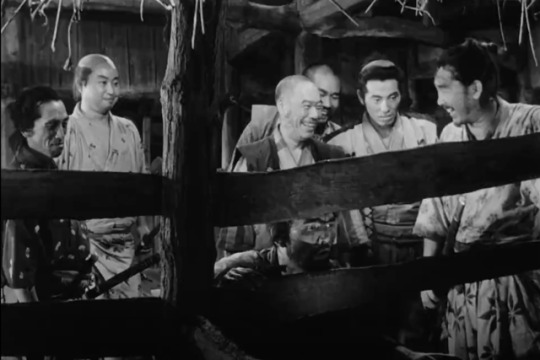
Heihachi’s smile is infectious.
#seven samurai#Shichinin no Samurai#akira kurosawa#kurosawa akira#kambei shimada#shichiroji#Heihachi Hayashida#gorobei#gorobei katayama#katsushiro okamoto#kyuzo
9 notes
·
View notes
Photo

Latest masterpiece by yours truly, "The Seven Samurai"
I took an old black and white photo from the movie, increased the starkness of the black and white to give me that nice solid black. Then I added in colors for each one of them. Finding out what color works was pretty difficult, I had to make sure I chose the right colors that fit their personality and character. if you haven't seen the movie, I highly recommend it.
#akira kurosawa#seven samurai#Kikuchiyo#Kambei#Katsushiro#Kyuzo#Shichiroji#Gorobei#Heiachi#Village#Samurai#Farmers#Fan art#Digital coloring
7 notes
·
View notes
Photo

The original cast of the movie «Seven Samurai» (1954) in the armor and clothing of their characters from the anime «Samurai 7» (2004)
#seven samurai#samurai 7#kikuchiyo#kambei shimada#gorobei katayama#shichiroji#katsushiro okamoto#heihachi hayashida#kyuzo#anime#菊千代#島田勘兵衛#片山五郎兵衛#七郎次#岡本勝四郎#林田平八#久蔵#サムライ7#七人の侍
59 notes
·
View notes
Text
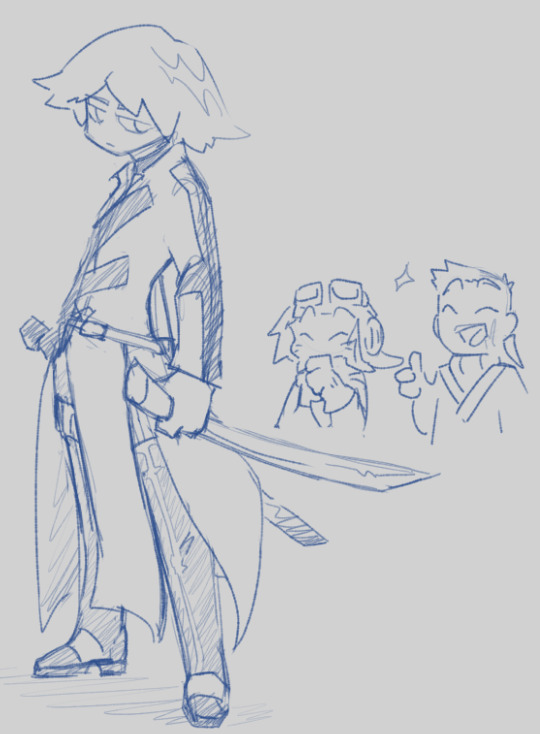
accidentally drew the tops of his boots too high in another pic and was told to give him thigh highs
40 notes
·
View notes
Text
Sometime family is five samurai dads with two samurai boys, one of them made of metal, and two mikumari daughters.
#samurai 7#shimada kambei#shichiroji#gorobei#kyuzo#heihachi mishima#katsushiro okamota#kikuchiyo#kirara mikumari#komachi mikumari
44 notes
·
View notes
Photo



au where everyone lives and everyone has access to electricity
basically this is what happens when kambei leaves them on the computer (which they had found in the dump) all alone for a solid minute without his guided supervision
(you know which draw the squad i’m talking about xD)
#samurai 7#draw the squad#shimada kambei#kikuchiyo#katayama gorobei#hayashida heihachi#kyuzo#shichiroji#kirara mikumari#okamoto katsushiro
45 notes
·
View notes
Photo
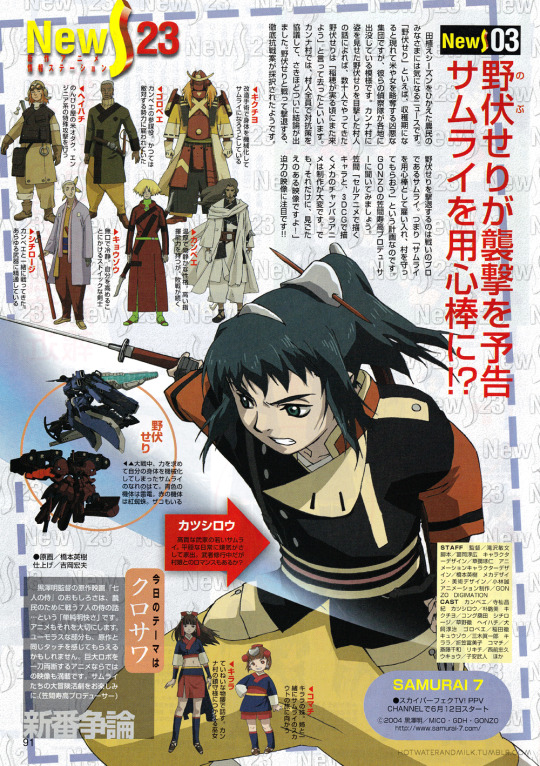
Series: Samurai 7
Artist: Hashimoto Hideki
Publication: Animedia Magazine (07/2004)
Source: Scanned from personal collection
#samurai 7#okamoto katsushirou#okamoto katsushiro#kikuchiyo#shimada kanbei#shichirouji#shichiroji#hayashida heihachi#kyuuzou#kyuzo#katayama goroubei#katayama gorobei#kirara#komachi#hashimoto hideki#hideki hashimoto#scan: hotwaterandmilk#animedia#00s anime#mecha anime
41 notes
·
View notes
Link
This is one of the greatest movies ever made, so lets talk about what is wrong with it. It also invented one of the greatest D&D plots. If you want more of these podcasts, you can check it out here
https://www.patreon.com/EvilElitest
#Fatal Flaw#Seven Samurai#akira kurosawa#Toshiro Mifune#Kikuchiyo#Kembei Shimada#Shichiroji#Katsushiro Okamoto#heihachi hayashi#kyuzo#Gorobei Katayama#Takashi Shimura#Daisuke Kato#isao kimura#Minoru Chiaki#Seiji Miyaguchi#Yoshio Inaba#yoshio tsuchiya#rikichi#Bokuzen hidari#Yohei#criterion collection
5 notes
·
View notes